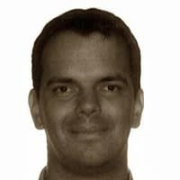


Check Point CloudGuard CNAPP and Sysdig Secure are both robust cloud security solutions. Check Point CloudGuard CNAPP is favored for its pricing and customer support, while Sysdig Secure is superior in features, justifying its higher price.
Features: Check Point CloudGuard CNAPP offers comprehensive threat protection, simplified management, and integration capabilities highly valued by users. Sysdig Secure excels in runtime security, visibility, and compliance features. Users find Sysdig Secure more feature-rich.
Room for Improvement: Users suggest Check Point CloudGuard CNAPP could improve its performance optimization and expand integrations. Sysdig Secure users point out that ease of use and lower false positives are areas for enhancement. Check Point CloudGuard CNAPP has more performance-related improvement needs, while Sysdig Secure focuses on usability.
Ease of Deployment and Customer Service: Check Point CloudGuard CNAPP is praised for its straightforward deployment and excellent customer support. Sysdig Secure is noted for its smooth deployment process but receives mixed reviews regarding support responsiveness. Check Point CloudGuard CNAPP has a slight edge in customer service.
Pricing and ROI: Check Point CloudGuard CNAPP is seen as cost-effective with good ROI. Conversely, Sysdig Secure's higher costs are offset by its superior capabilities, delivering a strong ROI. Check Point CloudGuard CNAPP is more budget-friendly, but Sysdig Secure's feature set provides compelling value.
| Product | Market Share (%) |
|---|---|
| SentinelOne Singularity Cloud Security | 4.6% |
| Check Point CloudGuard CNAPP | 3.1% |
| Sysdig Secure | 3.1% |
| Other | 89.2% |



| Company Size | Count |
|---|---|
| Small Business | 44 |
| Midsize Enterprise | 21 |
| Large Enterprise | 53 |
| Company Size | Count |
|---|---|
| Small Business | 54 |
| Midsize Enterprise | 17 |
| Large Enterprise | 57 |
| Company Size | Count |
|---|---|
| Small Business | 5 |
| Midsize Enterprise | 2 |
| Large Enterprise | 3 |
SentinelOne Singularity Cloud Security offers a streamlined approach to cloud security with intuitive operation and strong integration capabilities for heightened threat detection and remediation efficiency.
Singularity Cloud Security stands out for its real-time detection and response, effectively minimizing detection and remediation timelines. Its automated remediation integrates smoothly with third-party tools enhancing operational efficiency. The comprehensive console ensures visibility and support for forensic investigations. Seamless platform integration and robust support for innovation are notable advantages. Areas for development include improved search functionality, affordability, better firewall capabilities for remote users, stable agents, comprehensive reporting, and efficient third-party integrations. Clarity in the interface, responsive support, and real-time alerting need enhancement, with a call for more automation and customization. Better scalability and cost-effective integration without compromising capabilities are desired.
What are SentinelOne Singularity Cloud Security's standout features?SentinelOne Singularity Cloud Security is deployed in industries needing robust cloud security posture management, endpoint protection, and threat hunting. Utilized frequently across AWS and Azure, it assists in monitoring, threat detection, and maintaining compliance in diverse environments while providing real-time alerts and recommendations for proactive threat management.
Check Point CloudGuard CNAPP offers comprehensive cloud security with features like dynamic access control, asset protection, and compliance checks, tailored for organizations seeking enhanced governance across AWS, Azure, and GCP platforms.
Check Point CloudGuard CNAPP provides robust capabilities, including centralized firewall management, IAM scanning, and real-time visibility. Its strengths lie in predictive visualization, threat intelligence, and auto-remediation, making it a valuable tool for risk mitigation and compliance management. The platform's integration and responsiveness enhance cloud security, ensuring alignment with industry standards and effective threat protection.
What are the key features of Check Point CloudGuard CNAPP?Organizations in finance, healthcare, and retail frequently implement Check Point CloudGuard CNAPP for compliance and security across cloud environments. It assists with workload protection, threat detection, and regulatory obligation fulfillment, proving effective for securing applications and monitoring API interactions.
In the cloud, every second counts. Attacks move at warp speed, and security teams must protect the business without slowing it down. Sysdig stops cloud attacks in real time, instantly detecting changes in risk with runtime insights, a unique AI architecture, and open source Falco. Sysdig delivers live visibility by correlating signals across cloud workloads, identities, and services to uncover hidden attack paths. By knowing what is running, teams can prioritize the vulnerabilities, misconfigurations, permissions, and threats that matter most. From prevention to defense, Sysdig helps enterprises move faster and focus on what matters: innovation.
Sysdig. Secure Every Second.
We monitor all Cloud-Native Application Protection Platforms (CNAPP) reviews to prevent fraudulent reviews and keep review quality high. We do not post reviews by company employees or direct competitors. We validate each review for authenticity via cross-reference with LinkedIn, and personal follow-up with the reviewer when necessary.